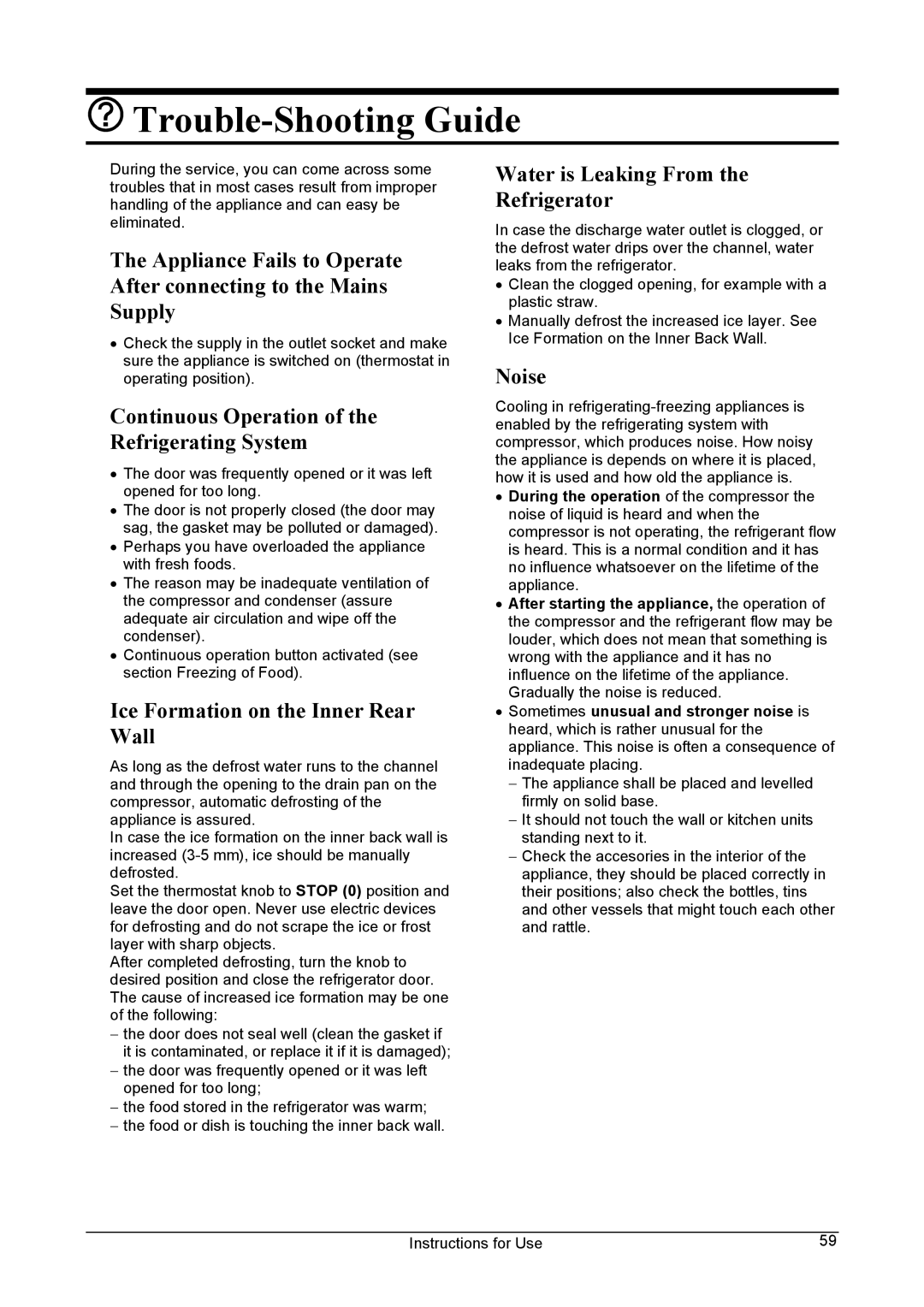FA28AP, FA28A1 specifications
The Smeg FA28A1 and FA28AP are two standout models in Smeg’s collection of refrigeration solutions, designed to blend style with high performance. These refrigerators exemplify Smeg's commitment to innovative technology, exceptional build quality, and retro aesthetic charm.One of the key features of the Smeg FA28A1 and FA28AP is their distinctive retro design. With smooth lines and vibrant color options, these models are an excellent addition to any kitchen environment, infusing it with a touch of nostalgia. The rounded edges and iconic Smeg logo contribute to a classic look that resonates with fans of vintage appliances.
In terms of functionality, the FA28A1 and FA28AP are equipped with advanced cooling technologies. The refrigerator uses a fan-assisted cooling system, ensuring an even distribution of cold air throughout the compartment. This technology helps maintain optimal temperatures, allowing food to stay fresher for longer periods. Additionally, both models come with an internal LED light that provides excellent visibility, making it easy to find items inside.
Temperature control is another significant aspect of these refrigerators. They feature an adjustable thermostat, allowing users to set the desired cooling levels according to their preferences. The FA28A1 and FA28AP also boast an energy-efficient design, with excellent Energy Class ratings, ensuring lower energy consumption without sacrificing performance.
The spacious interiors of both models offer ample storage solutions, including adjustable shelves for flexible arrangements. The FA28AP variant includes a crisp vegetable drawer, designed to keep fruits and vegetables fresh. Both models also feature door shelves that can accommodate larger bottles or jars, optimizing the use of available space.
In terms of noise levels, the Smeg FA28A1 and FA28AP operate quietly, making them ideal for open-plan living spaces.
Furthermore, both units are crafted with high-quality materials, ensuring durability and longevity. Their easy-to-clean surfaces make maintenance straightforward.
In summary, Smeg’s FA28A1 and FA28AP refrigerators combine stylish design and advanced technology. With features like fan-assisted cooling, energy efficiency, flexible storage options, and a nostalgic aesthetic, they cater to the needs of modern homeowners while adding a retro touch to kitchen decor. These models truly exemplify the perfect fusion of form and function.
